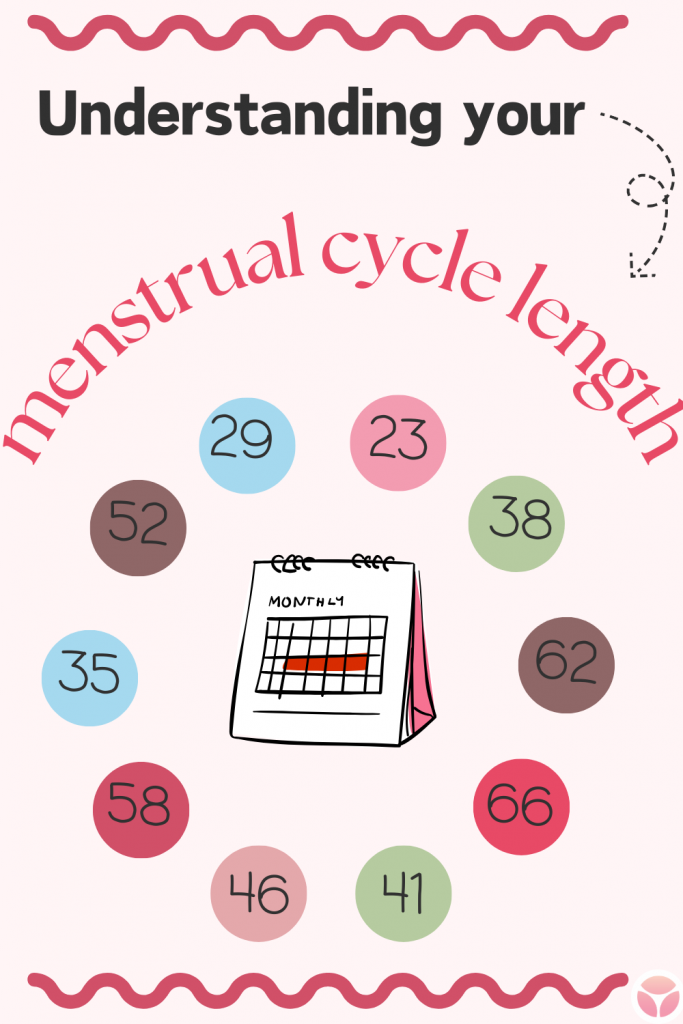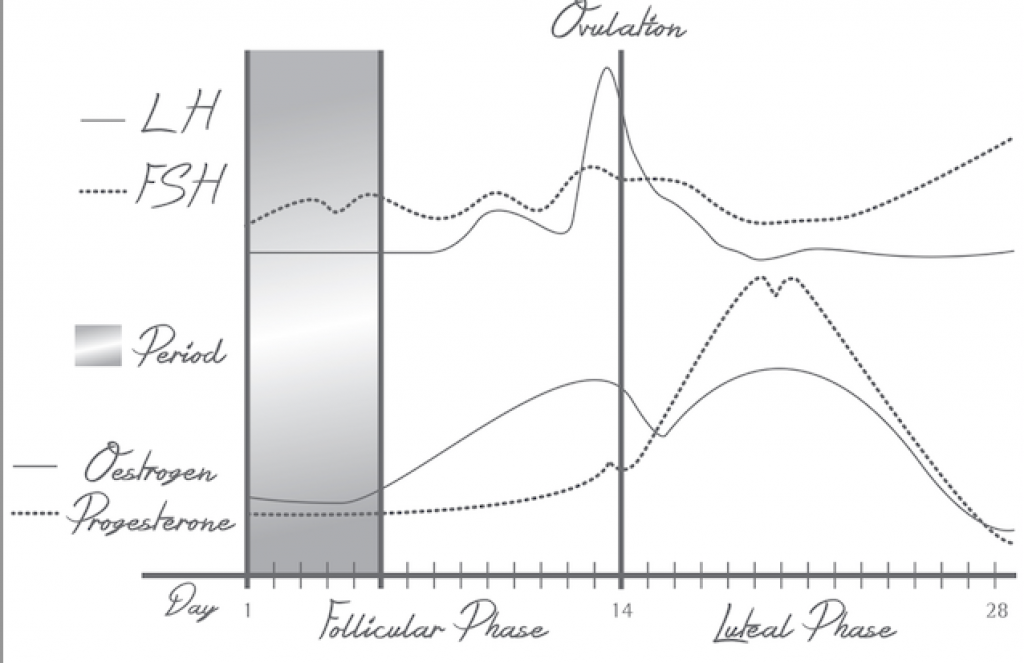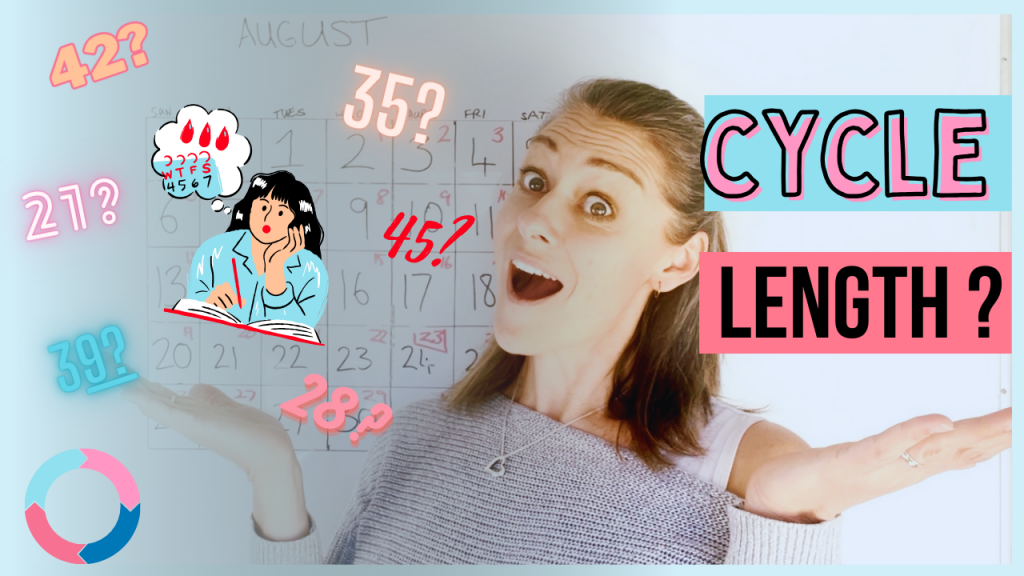
Today, let’s delve into a crucial aspect of your menstrual health: the length of your menstrual cycle. Understanding your menstrual cycle length can provide valuable insights into your hormonal balance and fertility.
Textbooks tell us that we should all have a 28-day menstrual cycle, but what is a healthy menstrual cycle length?
So, grab a cup of tea and let’s get started!
The First Period Sign to Track: The Length of Your Menstrual Cycle
For Teenagers: Teenagers, your bodies are undergoing significant changes. It’s entirely normal for your menstrual cycle to be a bit unpredictable at first. The follicular phase, a vital part of your menstrual cycle, can be longer in teenagers due to the time it takes your hormone system to fully mature.
A healthy menstrual cycle length for a teenager can range from 21 to 45 days. Don’t worry if you experience irregularity initially. Some teenagers only get 2 periods in their first year and it can take up to 4 years for your cycle to become regular.
Healthy Teenage Cycle Length: 21-45 days
For Adults: Adults, your menstrual cycle should ideally fall within 21 to 35 days for good hormonal balance. However, for optimum hormone health and specifically, fertility, a cycle length of 26 to 34 days is recommended.
Remember, 28 days is average and a myth really (read more here) and considered textbook normal.
Healthy Adult Cycle Length: 21-35 days
Signs of Hormone Imbalance
Understanding your menstrual cycle length offers clues to particular hormone imbalances. A menstrual cycle that is shorter than 21 days or longer than 35 days might indicate a hormone imbalance. If your cycles are irregular and your periods absent, it suggests ovulation dysfunction, and finding the cause is key to balancing your hormones. (Read on for reasons your period goes missing)
Regular cycles strongly suggest ovulation, a crucial event for balanced hormones and optimal fertility.
Understanding Cycle Phases:
- In a healthy cycle of 21-35 days, the length of the follicular phase can vary. While the luteal phase typically remains stable at 10-16 days.
- Short cycles could result from a short follicular or luteal phase.
- Long cycles might indicate delayed ovulation, leading to a prolonged follicular phase.
Short Cycles (Less Than 21 Days) – Potential Causes: Short Follicular or Luteal Phas.e
Long Cycles (More Than 35 Days) – Potential Causes: Delayed Ovulation, Long Follicular Phase, Normal length luteal phase or no luteal phase.

This image represents a 28-day menstrual cycle and you can see that ovulation is what divides the follicular and luteal phase. If you have a shorter cycle than 28-days, you will likely ovulate earlier. However, if you have a longer cycle, you will ovulate later, and then enter your luteal phase.
If you are not in the know about the follicular phase or the luteal phase, please catch up here by reading my previous article ‘The Menstrual Cycle: Phases and Hormones.’ The above paragraph will make more sense. Discovering whether you have a long or short follicular phase or short luteal phase is the key behind understanding which hormones are out of balance. This will help us natural healthcare practitioners can target treatments more specifically.
Irregular Cycles or Absent Periods
Once you understand your menstrual cycle length, you will be able to identify irregular or missed periods.
Irregular cycles, especially those without ovulation, can lead to absent periods or unpredictable bleeding due to the absence of progesterone production. If you’re experiencing these issues, it will benefit you to seek the help from an experienced hormone healthcare practitioner who can guide you through charting your menstrual cycle, correct assessments and provide appropriate treatment.
Alternatively, join the waitlist to my soon released online course and explore the insights of my online course, “Master Your Menstrual Cycle.” This comprehensive program empowers you to delve deep into your menstrual cycle, offering in-depth knowledge to identify approaching ovulation and confirm its occurrence. Even if you have irregular or long menstrual cycles, this course provides tailored guidance, making the process crystal clear for you. Join us on a journey of understanding and empowerment! 🌟🌺
Remember: You don’t have to do this alone. There’s help available.
How to Track Your Cycle Length
The easiest way to track and understanding your menstrual cycle length is by using a period-tracking app, this way you can see each month whether you have a healthy menstrual cycle length. Simply mark the first day of heavy bleeding as Day 1 and do the same when your next period arrives. The app will automatically track your cycle length. Alternatively, you can use a calendar or diary to note down the first day of your period each month.
For example, if your period is Day 1 and your next period arrived on day 32, that would mean your menstrual cycle length for that cycle is 31 days.
(I have created a step-by-step video that explains exactly how to calculate and understand your menstrual cycle length using a calendar. Please check this out for further clarification.)
Start Tracking Your Cycle Today: You’re in Control of Your Health!
If you’re interested in learning how to chart your own cycle, join the waitlist for my course ‘Master Your Menstrual Cycle’]. Remember, understanding your body is the first step toward a healthier, more balanced you.
Here’s to happy and healthy cycles! 🌸✨
Amanda xx
